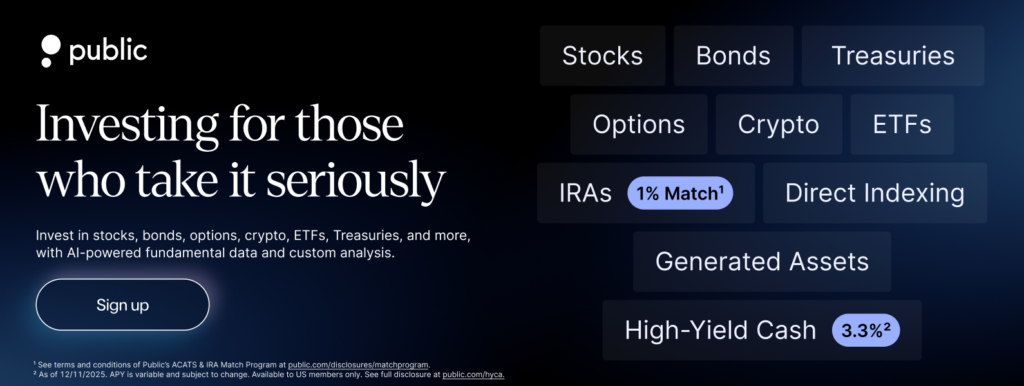For investors, an earnings report is a crucial tool that can provide deep insights into a company’s financial health and overall performance. But, for someone new to investing or financial analysis, it can seem overwhelming.
Being a good investor means being an informed investor. By learning to read an earnings report, you’re taking a solid step toward making smart decisions in the stock market.
This guide will break down how to read a company’s earnings report and what key elements to focus on to make informed investment decisions.
What is an earnings report?
An earnings report is a financial statement that provides a snapshot of a company’s performance over a specific period, typically a quarter. U.S. companies listed on stock exchanges are required to file these reports with the Securities and Exchange Commission (SEC) via forms such as the 10-Q (quarterly) and 10-K (annual).
The report highlights key metrics, including revenue, net income, and earnings per share (EPS), among other financial data.
This report shows how the company has done financially and legally, which should indicate its economic health. Put more simply, it lets you know if the company is making money. This helps you decide when, how much, or whether you should invest at all.
When do companies report earnings?
Publicly traded companies report their earnings to the SEC and investors every three months or quarterly. Not every company has to report at the same time, though many submit during what’s commonly referred to as “earnings season”. This occurs at the end of the following months:
You can find earnings reports on the SEC’s EDGAR platform or through financial news websites. Public.com also provides detailed earnings report analysis along with the audio recordings, original transcripts and official presentation deck of the reporting company.
Why are earnings reports important?
Earnings reports give you an understanding of a company’s financial health. They may enable you to:
- Evaluate profitability and cost management.
- Assess revenue growth and market trends.
- Understand management’s perspective on performance and strategy.
- Compare a company’s results to analyst expectations and industry peers.
Key components of an earnings report
Once a company submits its earnings reports to the SEC, the SEC publishes them through the EDGAR platform on its website. Here are the key components of an earnings report:
1. Income statement:
This is one of the most important sections of an earnings report. It provides details of the company’s income, expenses incurred, and profit earned during the reporting period. Key terms to understand in the income statement include:
- Revenue: AKA sales (you may hear people refer to this section as the top line). Revenue shows the total amount of money a company made during the quarter. Here, you can see whether revenue has grown or shrunk compared to the previous quarter or year.
- Cost of goods sold (COGS): This is the total cost of the good or service sold.
- Gross profit: Revenue minus COGS.
- Operating expenses: Aside from the COGS, these are the fees involved with running a business.
- Operating income: Gross profit minus operating expenses.
- Net income: Net income is the company’s profit after all expenses, taxes, and costs that have been deducted from revenue. This figure tells you how much money the company is actually keeping after paying all its bills.
2. Balance sheet:
This balances a company’s assets and liabilities, which details what they own versus what they owe. It includes:
- Assets: Resources owned by the company.
- Liabilities: Debts or obligations.
- Equity: The residual interest in the assets after deducting liabilities.
3. Cash flow statement
This is where you’ll see how much money a company exchanges with others. This metric shows how much cash a company is generating from its operations. The cash flow statement breaks down cash inflows and outflows into three categories:
- Operating activities: Cash generated from regular business operations.
- Investing activities: Cash used for purchasing assets or investments.
- Financing activities: Cash flows related to borrowing, repaying debt, or paying dividends.
Analyzing the cash flow statement may provide insights into a company’s liquidity and ability to meet financial obligations.
4. Earnings per share (EPS)
This is a key financial metric that calculates a company’s profit for each share of its common stock. Companies often report both basic EPS and diluted EPS. Understanding these figures may help investors gauge profitability and compare it across companies.
5. Guidance
Guidance refers to the company’s outlook for future quarters. Many companies offer guidance on revenue, earnings, or other key metrics. Positive guidance can boost investor confidence, while negative guidance might signal potential trouble ahead.
Most earnings reports include commentary from management about the company’s performance and future outlook. While these statements provide context for the numbers, it is important to evaluate them alongside the data in the report.
How to decode an earnings report
Here’s are the steps that you may follow to decode an earnings report:
1. Start with key metrics:
Focus on revenue, net income, and EPS. To understand trends, you can compare these figures to the same quarter from the previous year and analyst expectations.
2. Analyze the income statement:
You can look at changes in revenue, operating expenses, and net income. Are costs growing faster than revenue? Is profitability improving?
3. Examine the balance sheet:
Assess whether the company’s assets are growing and how they are funded. You can watch for increases in debt or declining equity.
4. Review the cash flow statement:
Determine whether the company generates enough cash from operations to sustain its business. Negative cash flow from operations might be a red flag.
5. Evaluate guidance:
Many companies provide guidance for the next quarter or fiscal year. You may compare this outlook to analyst expectations and industry trends.
6. Listen to the earnings call:
An earnings report is often accompanied by an earnings call where management discusses results and answers analyst questions. You can pay attention to tone, confidence, and responses to tough questions.
How to spot potential concerns in a company’s earnings report
1. Missed expectations: If a company misses Wall Street’s revenue or EPS expectations, the stock may take a hit.
2. Declining margins: Decrease in profit margins could indicate that a company is facing higher costs or struggling to maintain pricing power.
3. Negative cash flow: If a company is consistently reporting negative cash flow, it may struggle to fund future growth or cover its debts.
4. Rising Debt: A significant increase in debt without corresponding revenue growth could indicate that a company is over-leveraging and may face a financial crisis.
Bottom line
Understanding an earnings report requires attention to both the numbers and the narrative. By carefully analyzing income statements, balance sheets, and cash flow statements, you may develop a clearer picture of a company’s financial health. Remember that no single report can provide a complete assessment, so consider broader industry trends and external factors.
Within the Public app, members can view upcoming earnings call dates for specific companies and even set calendar events to be reminded in advance.
To learn more, sign up on Public today and join a community of informed investors!


